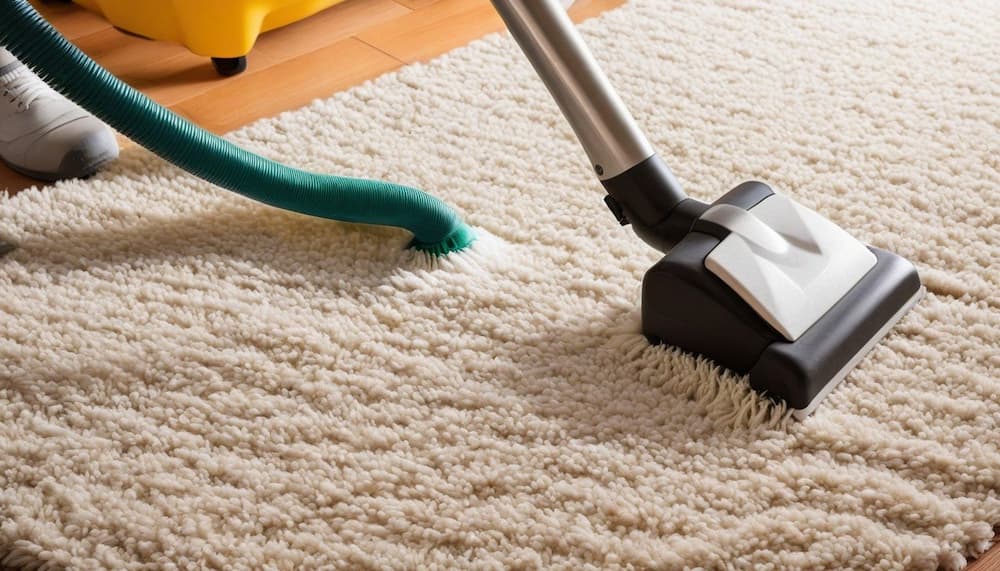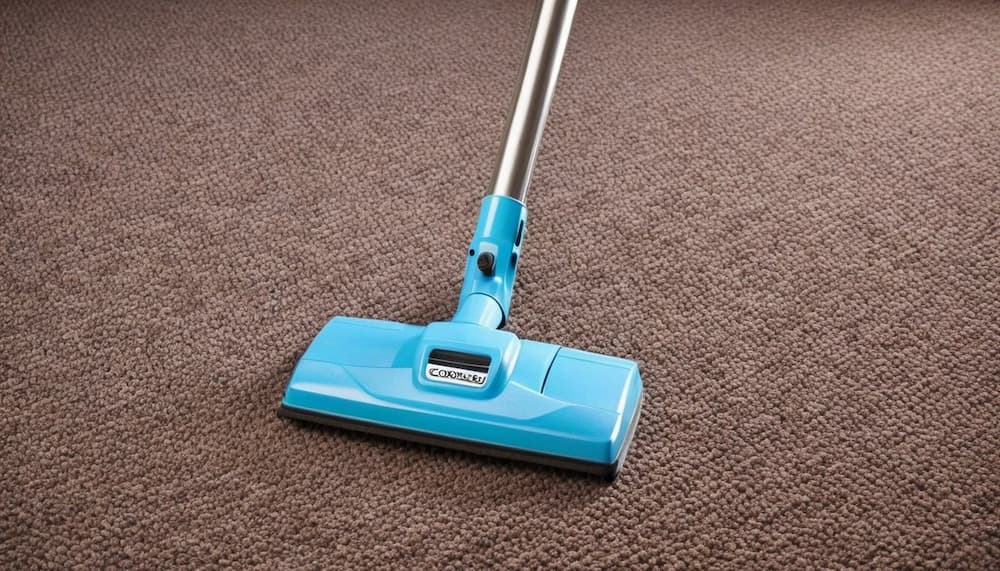When it comes to maintaining a clean and fresh home, one area that often requires special attention is our carpets. Over time, carpets can accumulate dirt, stains, and odors, which can be difficult to remove without the right cleaning solution. While there are numerous commercial carpet cleaners available on the market, many people are turning to a more cost-effective and eco-friendly alternative: DIY carpet cleaners.

Benefits of using a DIY carpet cleaner
There are several advantages to using a DIY carpet cleaner. Firstly, it allows you to have full control over the ingredients used in the cleaning solution. This is particularly beneficial if you have sensitivities or allergies to certain chemicals commonly found in commercial cleaners. Additionally, making your carpet cleaner is often much cheaper than purchasing a pre-made solution, saving you money in the long run. Furthermore, by using natural ingredients, you can contribute to a healthier environment by reducing the use of harsh chemicals in your home.
Common ingredients for DIY carpet cleaners
Before we dive into the different recipes for homemade carpet cleaning solutions, let’s first explore the common ingredients that are often used in DIY carpet cleaners. These ingredients are not only effective at removing dirt and stains but are also safe for use on most types of carpets.
- Baking Soda: Known for its odor-absorbing properties, baking soda is a versatile ingredient that can help eliminate unpleasant smells from your carpets.
- White Vinegar: With its acidic properties, white vinegar is excellent at breaking down stains and removing dirt. It is also a natural deodorizer, leaving your carpets smelling fresh.
- Hydrogen Peroxide: This powerful ingredient is effective in removing tough stains such as wine, coffee, or pet urine. However, it’s important to test it on a small, inconspicuous area of your carpet before applying it to the entire surface.
- Dish Soap: Mild dish soap can be used to create a soapy solution that helps to lift dirt and grime from your carpets without causing damage.
Recipes for homemade carpet cleaning solutions
Now that we have an understanding of the common ingredients used in DIY carpet cleaners, let’s explore some simple yet effective recipes that you can try at home. Remember to always test the solutions on a small area of your carpet before applying them to the entire surface.
- Baking Soda and Vinegar Solution:
- Mix equal parts baking soda and white vinegar to create a paste.
- Apply the paste to the stained areas of your carpet and let it sit for a few hours.
- Vacuum the area thoroughly to remove the dried paste, along with the dirt and odors it has absorbed.
- Hydrogen Peroxide and Dish Soap Solution:
- In a spray bottle, combine one part of hydrogen peroxide with two parts of water.
- Add a few drops of dish soap to the mixture and shake well.
- Spray the solution onto the stained areas of your carpet and let it sit for 10-15 minutes.
- Blot the area with a clean cloth or sponge to remove the stain, repeating as necessary.
Step-by-step guide on how to make and use a DIY carpet cleaner

Now that you have some recipes for DIY carpet cleaning solutions, let’s go through a step-by-step guide on how to make and use them effectively.
- Prepare the cleaning solution:
- Gather the necessary ingredients based on the recipe you have chosen.
- Mix the ingredients in the recommended proportions in a spray bottle or a bowl.
- Stir or shake the mixture well to ensure all the ingredients are combined.
- Test the solution on a small area:
- Before applying the cleaner to your entire carpet, test it on a small, inconspicuous area.
- Apply a small amount of the solution and let it sit for a few minutes.
- Check for any adverse reactions such as colour fading or carpet damage.
- Apply the cleaner to the stained areas:
- Identify the areas of your carpet that require cleaning.
- Spray or pour a small amount of the cleaning solution onto the stains.
- Use a clean cloth, sponge, or a soft-bristled brush to gently work the solution into the carpet fibers.
- Let the solution sit:
- Allow the cleaning solution to sit on the stains for the recommended amount of time, usually around 10-15 minutes.
- This allows the solution to penetrate the stains and break down the dirt or grime.
- Blot or rinse the area:
- After the solution has had time to work, blot the area with a clean cloth or sponge to remove the excess moisture and dirt.
- If necessary, rinse the area with clean water to remove any residue from the cleaning solution.
- Use a clean towel or paper towel to absorb as much moisture as possible.
- Allow the carpet to dry:
- Open windows or turn on fans to promote air circulation and aid in the drying process.
- Avoid walking on the damp carpet until it is completely dry to prevent new stains or damage.
Safety precautions when using DIY carpet cleaners
While DIY carpet cleaners are generally safe to use, it’s important to take certain precautions to ensure your safety and the longevity of your carpets.
- Read and follow the instructions:
- Before using any cleaning solution, carefully read the instructions and follow them accordingly.
- Pay attention to any warnings or precautions mentioned on the product labels.
- Test the solution on a small area:
- As mentioned earlier, always test the cleaning solution on a small, inconspicuous area of your carpet.
- This will help you identify any adverse reactions or potential damage before applying the solution to the entire carpet.
- Use protective gear:
- When handling cleaning solutions, especially those containing chemicals such as hydrogen peroxide, it’s advisable to wear gloves to protect your hands.
- Additionally, ensure the area is well-ventilated to prevent inhaling any fumes.
- Keep children and pets away:
- During the carpet cleaning process, it’s best to keep children and pets away from the treated areas until the carpet is completely dry.
- This prevents accidental ingestion of the cleaning solution or exposure to potentially harmful chemicals.
- Store the cleaning solutions properly:
- If you have leftover cleaning solutions, store them in a cool, dry place away from direct sunlight.
- Ensure they are out of reach of children and pets to prevent any accidents.
Tips for effective carpet cleaning

To achieve the best results when using a DIY carpet cleaner, consider the following tips:
- Act quickly on stains:
- The longer a stain sits on your carpet, the more difficult it becomes to remove.
- As soon as you notice a spill or stain, tackle it promptly to prevent it from setting in.
- Vacuum before cleaning:
- Before applying a cleaning solution, vacuum your carpets thoroughly to remove loose dirt and debris.
- This will make the cleaning process more effective and prevent the dirt from spreading further.
- Blot, don’t rub:
- When removing stains or excess moisture from your carpet, always blot the area with a clean cloth or sponge.
- Rubbing the carpet vigorously can damage the fibres and spread the stain.
- Use a white cloth for blotting:
- When blotting the carpet, choose a white cloth or towel to avoid any potential colour transfer from the cloth to the carpet.
- Dry the carpet thoroughly:
- Properly drying your carpets after cleaning is crucial to prevent the growth of mould or mildew.
- Ensure the room is well-ventilated and use fans or open windows to speed up the drying process.
Frequently asked questions about DIY carpet cleaning
- Are DIY carpet cleaners as effective as commercial cleaners?
- While DIY carpet cleaners can be effective in removing most stains and dirt, they may not be as powerful as commercial cleaners for deep cleaning purposes.
- However, for regular maintenance and spot cleaning, DIY solutions can yield satisfactory results.
- Can I use DIY carpet cleaners on all types of carpets?
- DIY carpet cleaners are generally safe to use on most types of carpets. However, it’s important to test the solution on a small, inconspicuous area first to ensure it doesn’t cause any damage or colour fading.
- How often should I clean my carpets?
- The frequency of carpet cleaning depends on various factors such as the amount of foot traffic in your home, the presence of pets, and any specific allergies or sensitivities.
- As a general guideline, it’s recommended to deep clean your carpets at least once a year and perform regular spot cleaning as needed.
- Can DIY carpet cleaners remove pet urine odours?
- Yes, DIY carpet cleaners can help eliminate pet urine odours. However, for severe or persistent odours, it’s advisable to consult a professional carpet cleaning service.
Alternative options for carpet cleaning
While DIY carpet cleaners can be effective, there are alternative options available if you prefer not to make your cleaning solutions.
- Carpet cleaning machines:
- Renting or purchasing a carpet cleaning machine can provide a more thorough and efficient cleaning experience.
- These machines use hot water extraction to deep clean carpets and remove embedded dirt and stains.
- Professional carpet cleaning services:
- If you prefer to leave the task of carpet cleaning to the experts, hiring a professional carpet cleaning service is a convenient option.
- Professional cleaners have the knowledge, equipment, and expertise to tackle even the toughest stains and restore your carpets to their original condition.
Conclusion: The advantages of DIY carpet cleaning
In conclusion, creating your DIY carpet cleaner offers numerous benefits. Not only do you have control over the ingredients used, but it is also a cost-effective and eco-friendly alternative to commercial cleaners. By following the recipes and tips provided in this guide, you can effectively and safely clean your carpets, keeping them looking fresh and extending their lifespan. Whether you choose to make your carpet cleaner or explore alternative cleaning options, the key is to prioritize regular maintenance to ensure a clean and healthy home environment.
